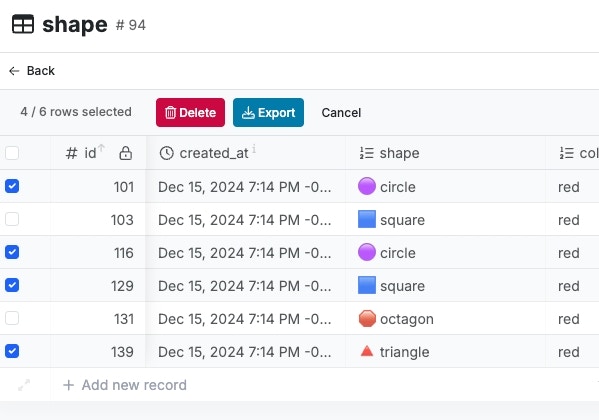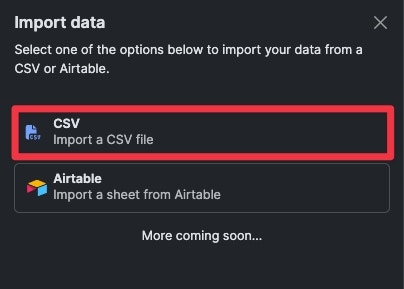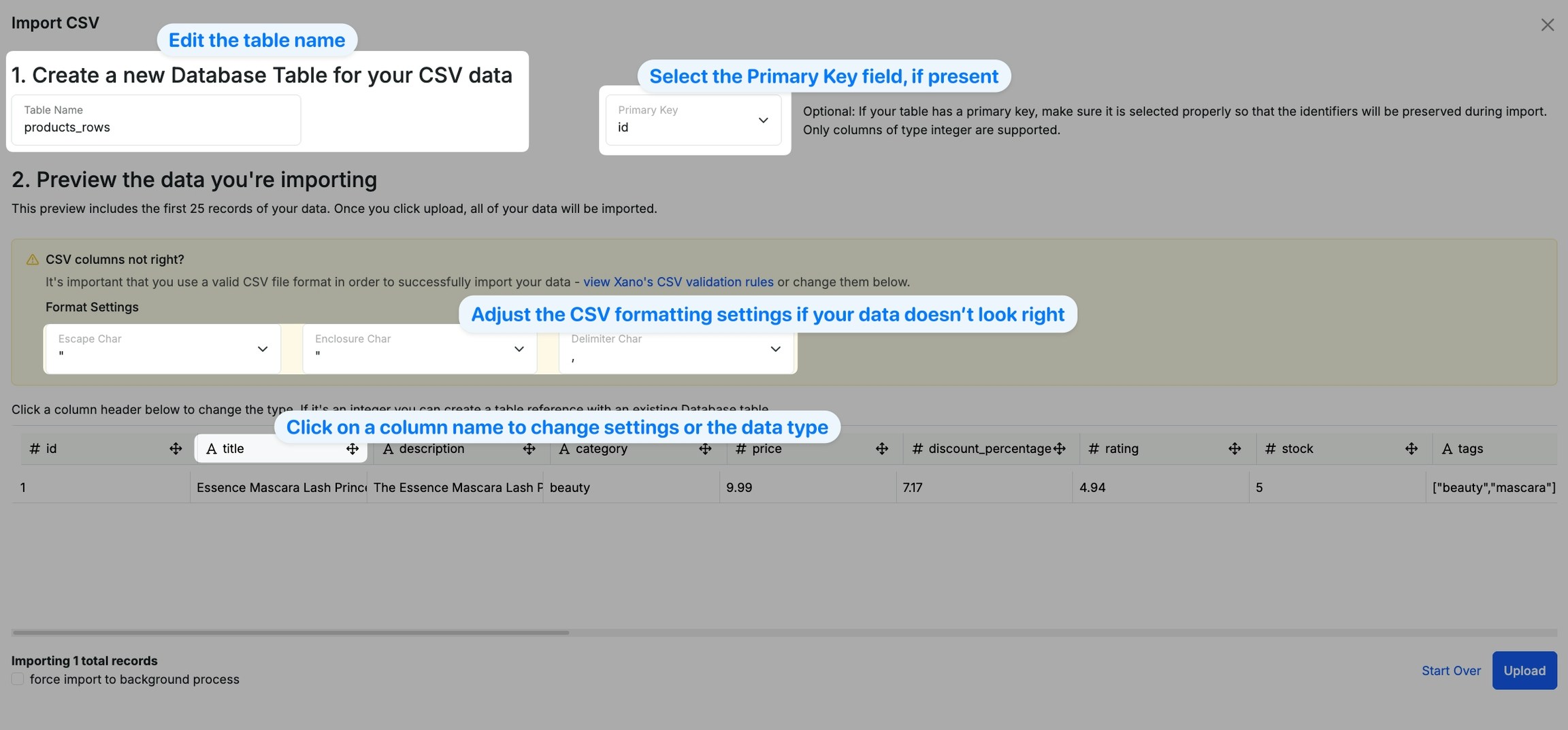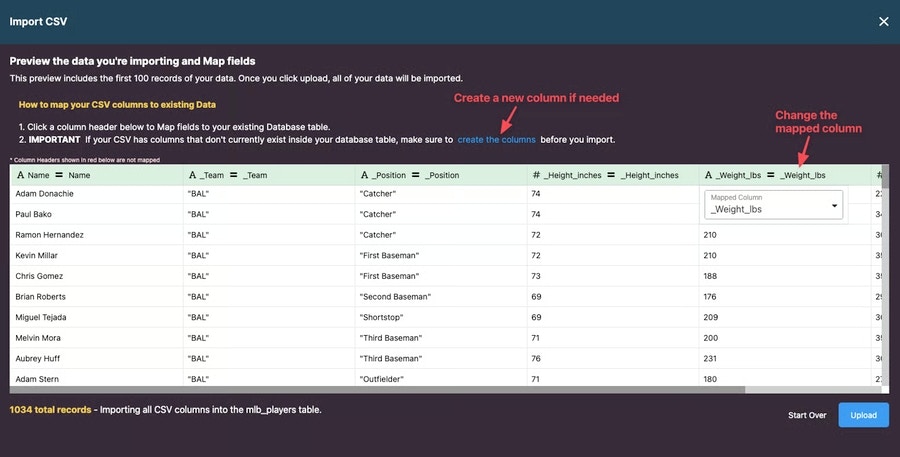Export a Table or View
Click theExport Specific Records
Check the box next to the records you want to export and click the
Importing a CSV
Xano’s CSV file import is ultra-robust. Import your file with confidence, even if you have millions of records. The import process runs on Xano’s special import service, which has dedicated resources separate from your instance, so it can handle all of your data no matter how large it is. The CSV file import allows you to create a brand new table from scratch and will generate the schema automatically. Additionally, you can edit existing records if the file can be mapped to a primary key or append data to an existing table. Uploads of over 5,000 records will be performed in the background. You can easily monitor the import’s progress in the settings of your workspace and will be notified on Xano and via email when the import is complete.Add a New Table
From the database select Add Table.
Select Add Table and Select Import Data.

Select import data from CSV.


Add to an Existing TableYou can import a CSV to an existing table if you’d like to add records to it. The process is the same as importing to a new table — just access the import option from inside of the database table you want to add to.



Edit Records in an Existing TableJust like adding records to an existing table, you can also use a CSV upload to edit records in a table.The only difference between adding a new table or adding to an existing table is that you’ll need to make sure your CSV contains an
id field. This is what Xano will use to find the records to apply changes to.Valid CSV Format
It’s important that you use a valid CSV file format in order to successfully import your data. If there is an issue with initiating the upload then this could likely be the issue.What is a valid CSV file format?
A CSV stands for a comma-separate file, which is a** **delimited text file that uses a comma to separate values. The importer does not support other separators, such as semicolons. Each line of the file is a data record. Each record consists of one or more fields, separated by commas.- The first row must contain the column names - not the file name or any other data.
- The second row begins the values. They should be in the same order as the columns they belong to.
- Each row should have the same amount of values as there are columns.
- Enclosure characters are required when working with text strings that contain quotation marks. This is because if a quotation mark is detected, this is typically something that would mark the beginning or end of a value. You can use a double quote ("") to dictate if a value should contain this quotation mark somewhere inside the value.
- CSV files should be UTF-8 encoded. If you’re having trouble importing your CSV properly in Xano and have determined you are using both the proper separator and enclosure characters, please make sure your file us UTF-8 encoded. This ensures that there are no special characters that might not be supported in Xano.
UTF-8 Encoding in Notepad (Windows)
UTF-8 Encoding in Notepad (Windows)
- Open your file in Notepad.
- Click File > Save As…
- Click “Save As Type”, and choose All Files.
- Click “UTF-8” in the Encoding dropdown.
- Save the file.
UTF-8 Encoding in Google Sheets (All platforms)
UTF-8 Encoding in Google Sheets (All platforms)
- Open your file in Google Sheets
- Click File > Download > Comma separated values (CSV)
- The file will be downloaded in CSV format using UTF-8 encoding.
UTF-8 Encoding in Numbers (Mac)
UTF-8 Encoding in Numbers (Mac)
- Open your file in Numbers
- Click File > Export To… > CSV
- In the “Text Encoding” dropdown, choose UTF-8
- Save the file.
Xano-Sample-CSV.csv
Here is a sample CSV file demonstrating both the proper separator and enclosure characters.